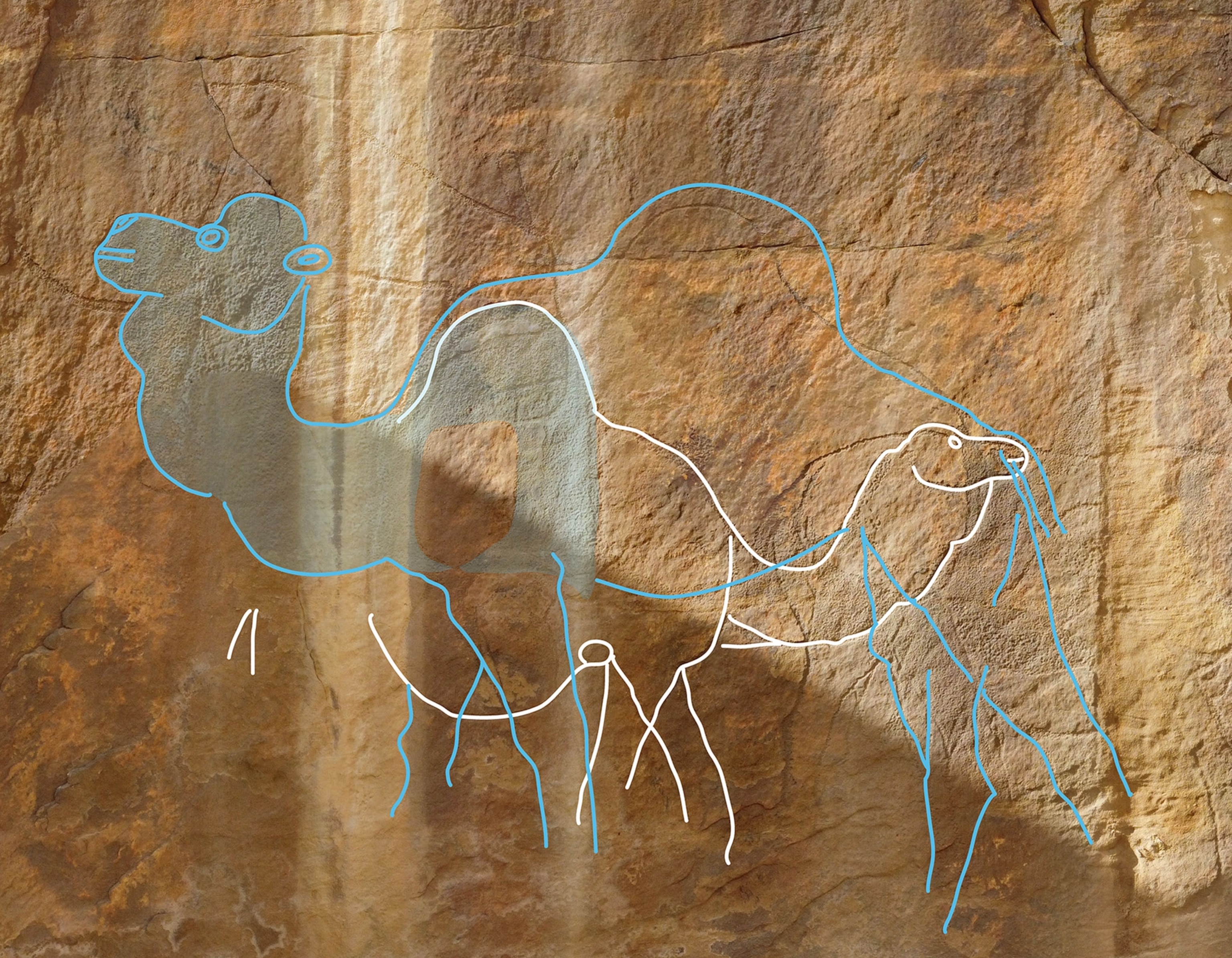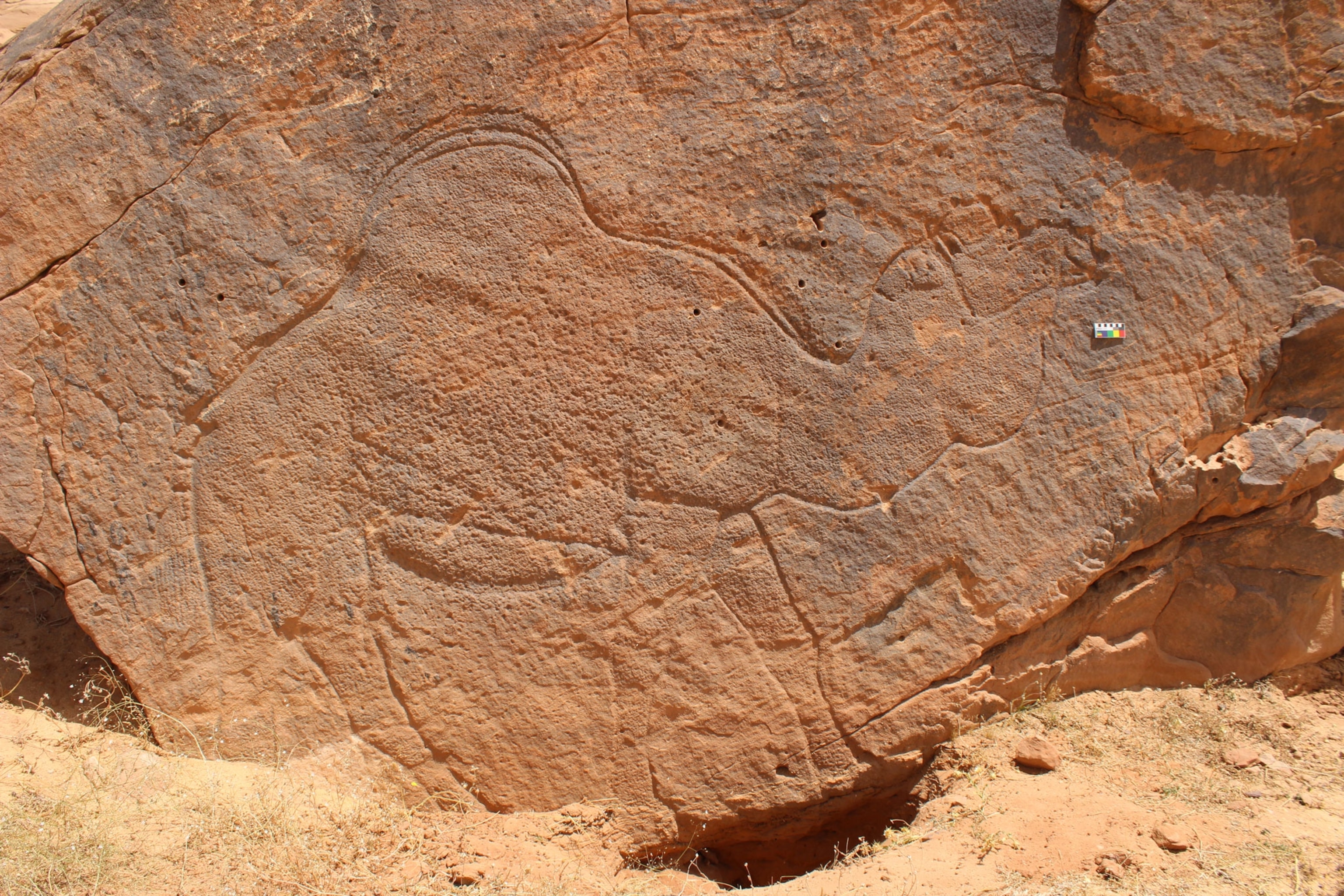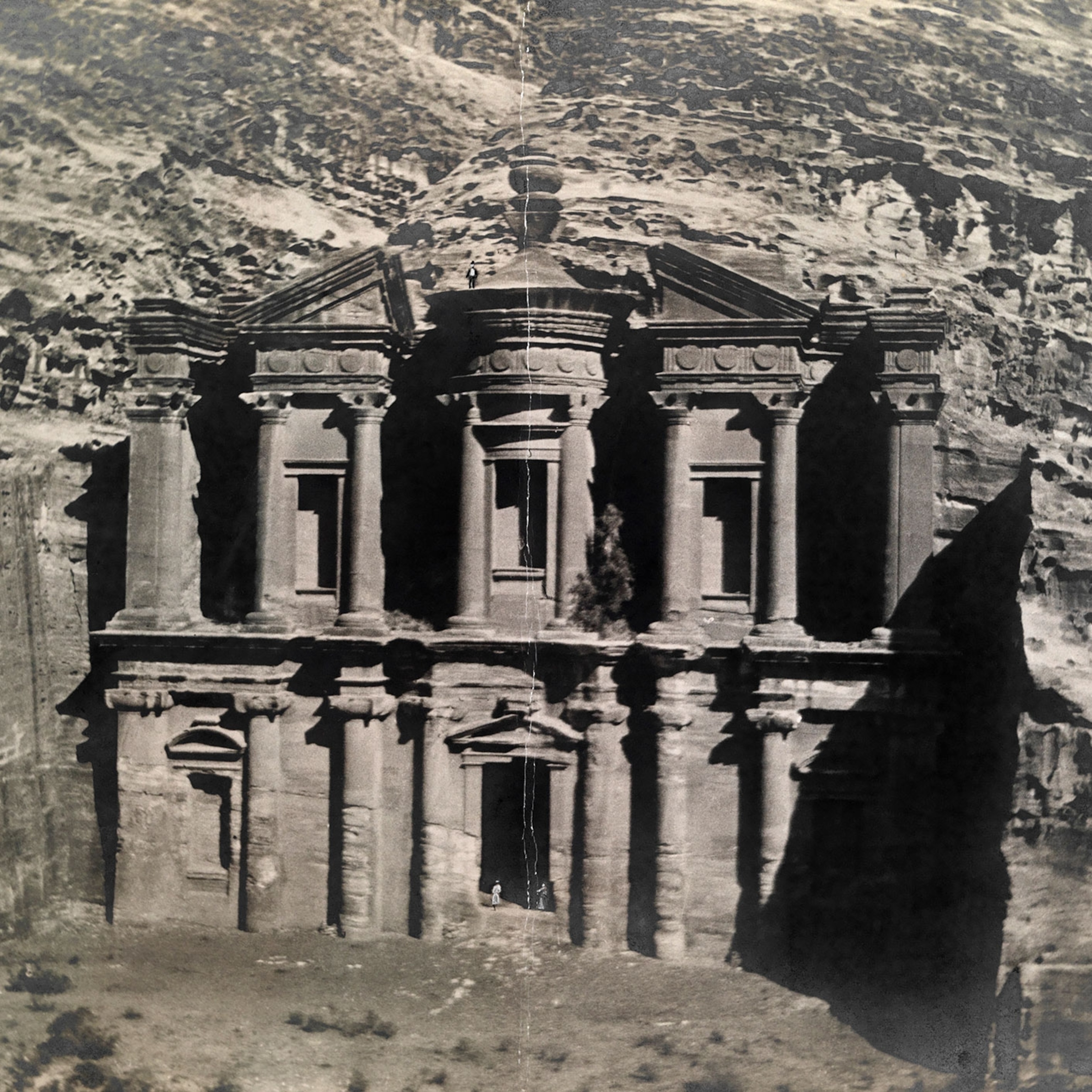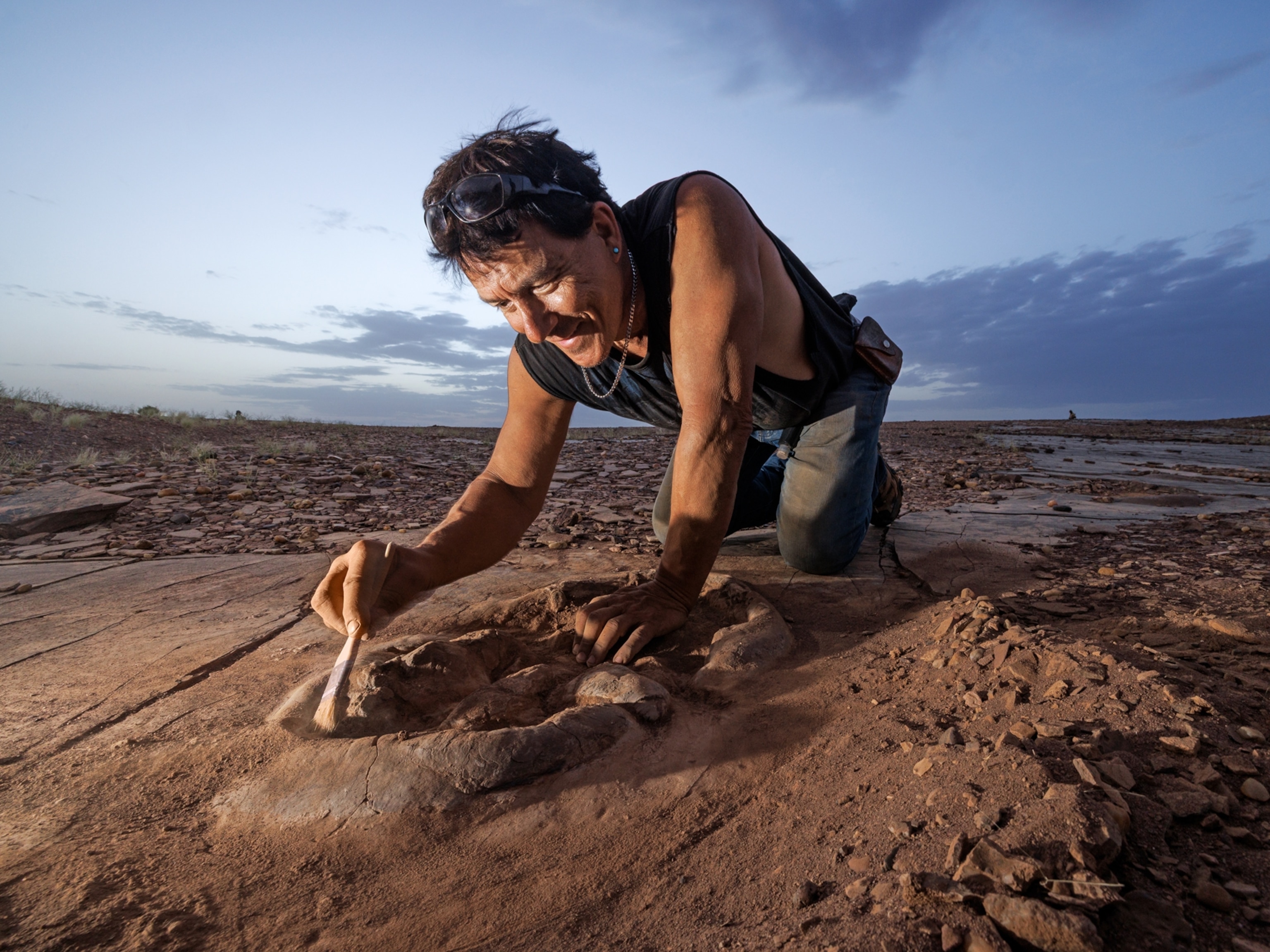
Scientists discover life-sized camels carved into rocks in the Arabian Desert
The drawings—the oldest dated monumental rock art in Arabia—are the firmest evidence that humans lived there during a dry period about 12,000 years ago.
Sprawled across much of the Arabian Peninsula, today’s Arabian Desert is known for brutal heat, dry, harsh winds and scarce water—hardly hospitable to human settlers unaided by air conditioning and a reliable water supply.
But newly discovered, life-size sandstone carvings of kneeling camels, gazelles, and other animals alongside humans suggest people may have thrived and engraved rock art in that arid region some 12,000 years ago, a couple thousand years earlier than archeologists previously thought.
The findings are the oldest dated monumental rock art found so far in Arabia, according to Maria Guagnin, an archeologist at the Max Planck Institute of Geoanthropology in Germany. Excavating in Northern Arabia’s Nefud Desert, Guagnin and her team discovered about 130 stone engravings—some more than six-feet tall—of humans, camels, wild donkeys, ibex, gazelles, and an extinct relative of today’s cattle called an aurochs. They dated the rock art to between 12,800 and 11,400 years ago. Guagnin and her colleagues published their findings Tuesday in the journal Nature Communications.
“We know that human communities lived in the Arabian Desert during repeated wet phases, when rainfall increased and grasslands and lakes spread in areas that are now desert,” says Guagnin. But there’s little evidence that early people occupied Northern Arabia between about 25,000 and 10,000 years ago, during which there were periods of extreme dryness and aridity, and humans were thought to have abandoned the area.

Previously, researchers have discovered an 88,000-year-old fossilized finger bone and 120,000-year-old fossilized human footprints in the Arabian Peninsula, suggesting that the landscape went through humid periods when it was lush and green. Research has also suggested that one of the more recent wet and humid periods took place between about 11,000 and 5,500 years ago, and other work has shown that there was a wet phase in Northern Arabia between 8,800 and 7,900 years ago.
These new rock art findings dating to about 12,000 years ago, Guagnin says, suggest “humans were able to live in these areas before the last wet phase and were able to survive and thrive in challenging environments,” like when the area was dry and desolate. She adds that it shows that communities re-occupied Arabia around 12,000 years ago and that these communities were likely well-established and not just temporary visitors.
“It is also the earliest evidence we have that human communities survived during dry periods,” Guagnin says.
Desert animal monuments
The art is located near watering holes and ancient lakes, suggesting humans might have survived despite extreme aridity on seasonal sources of water, which they may have marked with these life-size engravings as monuments. Researchers also discovered hundreds of stone tools at the site, including engraving tools buried in a layer of sediment that dates to about 12,000 years ago. The researchers acknowledge though that they couldn’t confirm if those specific tools were used to make the carvings, or if they had been transported from elsewhere and left there separately.
Some of the engravings were etched into the gaps between boulders. Others were carved into the face of cliff surfaces, some of which were difficult to access but highly visible, likely requiring the artist to climb a cliff and work from a ledge sloping downward. The “engravers likely risked their lives to create this art,” the authors wrote.
“The engravings express a symbolism that relates to desert animals and to seasonality,” including camels during their mating season, the authors wrote. Human communities may have stayed nearby for generations, adding new engravings to the panels for as many as 2,000 or 3,000 years, Guagnin says.
Dating rock art
The researchers used a mix of techniques to estimate the age of the carvings, nearby water sources, and tools, including radiocarbon dating and luminescence dating, which analyzes when sediment near the carvings and where the tools were embedded was last exposed to sunlight.
“Most previous work had shown that the Neolithic cultures in the region and the associated rock art developed around 11,000 to 10,000 years ago,” says Meinrat Andreae, a biogeochemist and director emeritus at the Max Planck Institute for Chemistry in Germany, who was not involved in the paper. “This study pushes the timetable back several thousand years,” he adds.
The carvings also appear strikingly sophisticated, Andreae adds. “Most early rock art in Arabia is quite abstract and uses simple imagery,” but these carvings—some of which are stylized, and others that appear attempts at more natural depictions—“rival the sophistication of the cave art in Paleolithic Europe.”

While rock art often gives us a window into “ancient peoples’ minds and lifeways,” it’s often difficult to firmly establish when it was created, Andreae says. “Here, we have an extremely rare case” where the scientists used various geological techniques to connect the carvings they discovered “to a distinct ancient population and its culture.”
Still, it’s difficult to establish for certain the exact earliest date of the carvings. Parts of some camel carvings were buried in a sediment layer suggesting that they were engraved no later than when that layer was deposited, but without knowing the rate that sand in the region was deposited, it’s impossible to say when exactly that was, outside experts say.
The findings also don’t clarify “how continuous occupation really was during drier phases,” says Remy Crassard, an archaeologist at the French National Centre for Scientific Research. “And we don’t yet know how widespread this monumental rock art tradition was, or precisely what social or ritual role it played.”
Compared to neighboring regions like the Levant or the Zagros mountains, human history in the Arabian Peninsula is far less understood—in part because there are fewer stratified archeological deposits there, says Yamandú Hilbert, a paleoanthropologist at the Senckenberg Centre for Human Evolution and Palaeoenvironment at the University of Tübingen in Germany.
“With each new stratified and dated occurrence, we make huge steps towards a better understanding of prehistoric occupation across the Arabian Peninsula,” he says, though he added these findings could have been bolstered by newer analytical techniques, including analyzing wear on the engraving tools.
The research team has since discovered even older carvings and is currently focused on dating those, Guagnin says.
“We know that the camel engraving tradition lasted a long time, but we don’t know when and how it ended,” she says “We are hoping to carry out more fieldwork that will explore the end of this tradition.”







